'We're contributing to greater wildlife conservation happening all around the planet, which is exciting. And it's based here in Calgary, which is an amazing thing for our community'
Author of the article: Stephanie Babych
Publishing date:Dec 25, 2021
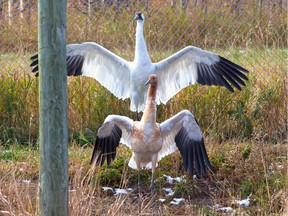
Whooping cranes photographed at the Calgary Zoo's Devonian Wildlife Conservation Centre.
Gavin Young/Postmedia
With new conservation projects underway and some highly anticipated animal births in the coming year, the Calgary Zoo and recently rebranded Wilder Institute is thrilled about what they have to offer the community and international conservation efforts in 2022.
One of the biggest changes this year was the rebranding of the Calgary Zoo Foundation into the Wilder Institute in November. It’s a new identity that Steven Ross, the zoo’s chief development officer, says speaks to the role the institutions play in national and international wildlife conservation.
“The Wilder Institute is our call to action. We want to see the world become a wilder place, we want to see more wildlife and we want to see more wild spaces,” said Ross.
“This is to draw attention to the fact that we are a science-based institute that is leading — in a lot of ways — on some really exciting conservation work around the world.”
As the Wilder Institute and Calgary Zoo expand their conservation efforts, they intend to double the number of programs they’re involved in by 2030. And one of the programs Ross said he’s most excited about is plant conservation, something people might not immediately associate with wildlife protection.
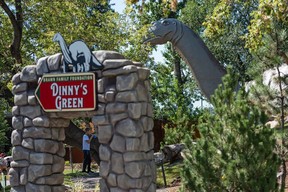
With new conservation projects underway and some highly anticipated animal births in the coming year, the Calgary Zoo and recently rebranded Wilder Institute is thrilled about what they have to offer the community and international conservation efforts in 2022.
One of the biggest changes this year was the rebranding of the Calgary Zoo Foundation into the Wilder Institute in November. It’s a new identity that Steven Ross, the zoo’s chief development officer, says speaks to the role the institutions play in national and international wildlife conservation.
“The Wilder Institute is our call to action. We want to see the world become a wilder place, we want to see more wildlife and we want to see more wild spaces,” said Ross.
“This is to draw attention to the fact that we are a science-based institute that is leading — in a lot of ways — on some really exciting conservation work around the world.”
As the Wilder Institute and Calgary Zoo expand their conservation efforts, they intend to double the number of programs they’re involved in by 2030. And one of the programs Ross said he’s most excited about is plant conservation, something people might not immediately associate with wildlife protection.

People spend the sunny afternoon at Brawn Family Foundation Dinny’s Green featuring Dinny, the Calgary Zoo’s popular Brontosaurus, on Friday, September 3, 2021.
The doors will be opening in 2022 for the zoo’s new wildlife conservation centre that’s being built south of Strathmore, giving the Wilder Institute a greater opportunity to expand the number of species it’s breeding and preparing for release.
Dr. Clément Lanthier, president and CEO of Wilder Institute and Calgary Zoo, said the transformative journey from a zoo that does conservation into a conservation organization that operates a zoo started in 2016.
“As part of our ambitious strategic plan, we are deepening our conservation efforts globally and aiming to significantly grow our community of supporters to enable this critical work,” Lanthier said in a press release.
By the end of next year, the Wilder Institute and Calgary Zoo will lead 16 global conservation programs in community conservation and conservation translocations alongside partner organizations for hippos, lemurs, mountain bongo, sitatunga, Vancouver Island marmot, burrowing owl, whooping crane, fisher, Half-moon hairstreak butterfly, Northern leopard frog, greater sage-grouse, swift fox, black-tailed prairie dog and black-footed ferret, sihek (Guam kingfisher) and Carolinian forest plants.
“Conservation is a challenging space and we’re all aware of climate change and other challenges that our world is facing, and we have a lot of hope in the work that we’re delivering. The species that we’re working to save each and every day are opportunities for folks to get involved with conservation,” said Ross.
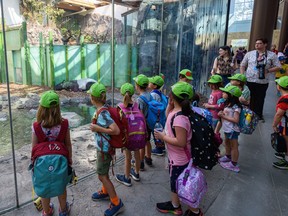
Visitors in the Calgary Zoo watch the newest residents of the Gateway to Asia, a newly re-imagined building formerly known as Panda Passage, on Thursday, July 22, 2021.
Azin Ghaffari/Postmedia
The zoo is appreciative of the outpouring of support from the community, Ross explained.
“We’re contributing to greater wildlife conservation happening all around the planet, which is exciting. And it’s based here in Calgary, which is an amazing thing for our community,” he said.
This year, the Calgary Zoo welcomed more than one million guests to the park and connected with 1,600 children at summer camps and 10,000 students through school programs. This was despite the various public health measures and capacity limits in place over the course of the year due to the COVID-19 pandemic.
The zoo is appreciative of the outpouring of support from the community, Ross explained.
“We’re contributing to greater wildlife conservation happening all around the planet, which is exciting. And it’s based here in Calgary, which is an amazing thing for our community,” he said.
This year, the Calgary Zoo welcomed more than one million guests to the park and connected with 1,600 children at summer camps and 10,000 students through school programs. This was despite the various public health measures and capacity limits in place over the course of the year due to the COVID-19 pandemic.
“We’ve continued to adapt our COVID protocols for people visiting the zoo and ensure that we have safety measures in place both for our staff and for all of our animals that we have on-site,” said Ross.
Calgary Zoo has thus far prevented outbreaks of COVID-19 among its animals, which has happened at several zoos in the world this year as the novel coronavirus was found to spread among tigers, hyenas, lions and gorillas, among other species. At the Lincoln Children’s Zoo in Nebraska, three snow leopards died from complications due to COVID-19 in November.
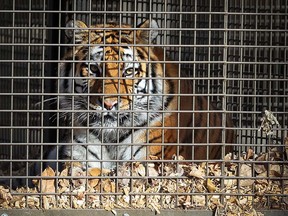
Female Amur tiger Sarma enjoys the day at the Calgary Zoo on Thursday, November 25, 2021.
PHOTO BY GAVIN YOUNG/POSTMEDIA
The Calgary Zoo has been working alongside other Canadian zoos to get animal doses of vaccine approved and delivered to the country so they can immunize vulnerable species.
“Very early on, we took measures to create barriers for certain species around the zoo,” Ross said, explaining that they have been in contact with partners around the world to understand what species are susceptible and where there might be a risk.
“We have an incredible team of people that have gone above and beyond to ensure that their safety protocols are very carefully monitored and implemented.”
An example of the increased safety precautions is the lemur walk-through, which has remained closed through the pandemic to avoid possible transmission from visitors to the animals.
“We put in place a lot of extra measures to ensure that public can still enjoy the zoo and enjoy the connection that they have when they’re on-site with the species that are there but done in a way that we can ensure safety,” said Ross.
Over the course of 2021, the Calgary Zoo cared for 4,482 animals across 114 species and released 283 animals into the wild.
The Calgary Zoo has been working alongside other Canadian zoos to get animal doses of vaccine approved and delivered to the country so they can immunize vulnerable species.
“Very early on, we took measures to create barriers for certain species around the zoo,” Ross said, explaining that they have been in contact with partners around the world to understand what species are susceptible and where there might be a risk.
“We have an incredible team of people that have gone above and beyond to ensure that their safety protocols are very carefully monitored and implemented.”
An example of the increased safety precautions is the lemur walk-through, which has remained closed through the pandemic to avoid possible transmission from visitors to the animals.
“We put in place a lot of extra measures to ensure that public can still enjoy the zoo and enjoy the connection that they have when they’re on-site with the species that are there but done in a way that we can ensure safety,” said Ross.
Over the course of 2021, the Calgary Zoo cared for 4,482 animals across 114 species and released 283 animals into the wild.
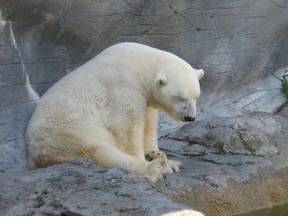
This image depicts a sleepy polar bear at Assiniboine Zoo in Winnipeg, Canada. The Calgary Zoo announced it will be bringing polar bears back to its Canadian Wilds section, as part of a larger revitalization plan.
PHOTO BY CASTAVERON /Getty Images/iStockphoto
Construction for the $31-million redevelopment of the Canadian Wilds section of the zoo started this year with a revamping of the river otter space and will continue into the new year. The area will also become home to polar bears, which are returning to Calgary for the first time in more than 20 years.
The zoo is also expecting some exciting birth and pregnancy announcements in 2022, including the birth of a baby gorilla in the spring to 20-year-old western lowland gorilla Dossi and the troop’s silverback leader, Jasiri, and the anticipated pregnancy of Amur tiger, Sarma, who has been matched with a new partner after an unsuccessful three-year courtship with Youri.
sbabych@postmedia.com
Construction for the $31-million redevelopment of the Canadian Wilds section of the zoo started this year with a revamping of the river otter space and will continue into the new year. The area will also become home to polar bears, which are returning to Calgary for the first time in more than 20 years.
The zoo is also expecting some exciting birth and pregnancy announcements in 2022, including the birth of a baby gorilla in the spring to 20-year-old western lowland gorilla Dossi and the troop’s silverback leader, Jasiri, and the anticipated pregnancy of Amur tiger, Sarma, who has been matched with a new partner after an unsuccessful three-year courtship with Youri.
sbabych@postmedia.com
No comments:
Post a Comment